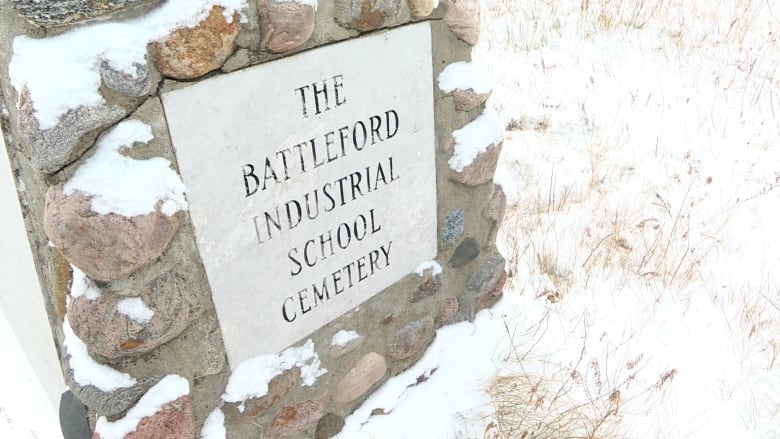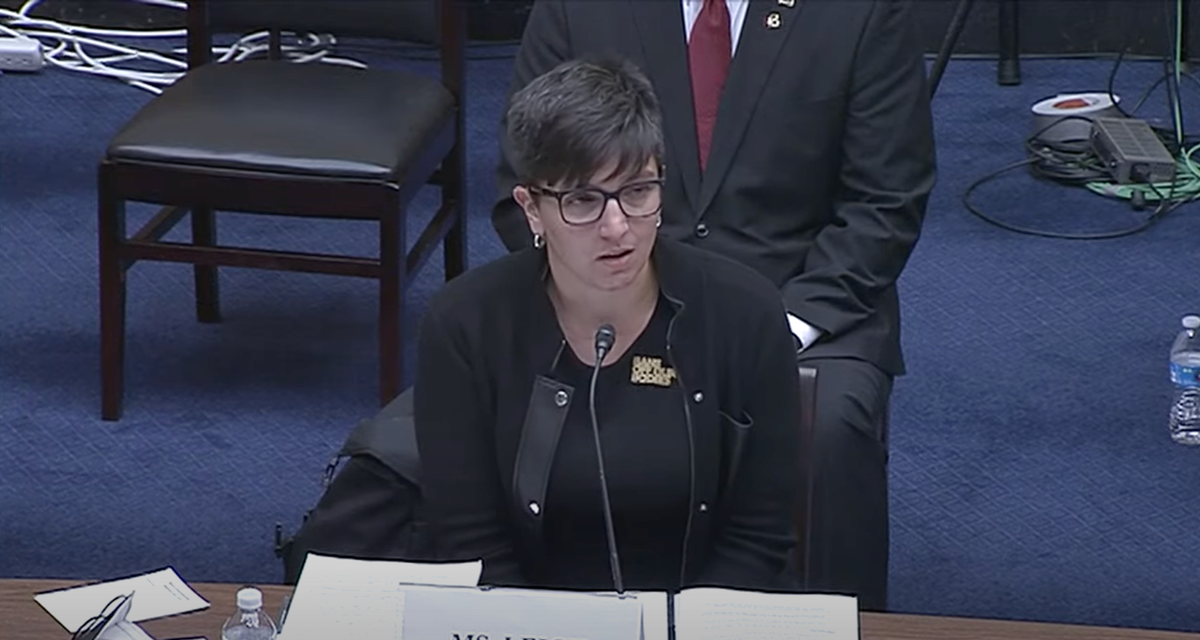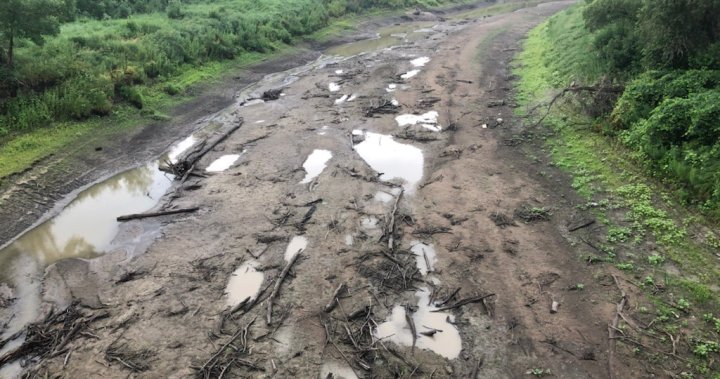More Sask. First Nations announce efforts to find graves of residential school students
WARNING: This story contains details some readers may find distressing.
More First Nations are announcing plans to search for unmarked graves at Saskatchewan residential school sites.
Battlefords Agency Tribal Chiefs Inc. (BATC), which represents six First Nations in the province, says it will conduct ground-penetrating radar work at the Battleford Industrial School and Thunderchild residential school sites next month.
Meanwhile, Star Blanket Cree Nation is also hoping to soon begin searching for graves at the site of the Whitecalf school in southeast Saskatchewan.
Those institutions were three of the approximately 20 federally-funded Saskatchewan residential schools that were initially operated by major Christian denominations. After being separated from their communities and families, students were subjected to various forms of neglect and abuse.
Neil Sasakamoose, BATC’s executive director, said his tribal council’s search work is being informed by the knowledge of elders, some of whom are still trying to locate the graves of loved ones who attended residential schools.
“The people are preparing themselves,” Sasakamoose said. “We’re really worried about what’s going to be uncovered there. We’re trying to maintain a peaceful mind as we enter into it. You’re talking about children and lost families.”
The Truth and Reconciliation Commission of Canada (TRC) found that 4,100 named and unnamed students died in residential schools and that many were likely buried in unmarked and untended graves at school or school-related cemeteries.
“Subjected to institutionalized child neglect in life, they have been dishonoured in death,” the commission wrote in the volume of its findings entitled Missing Children and Unmarked Burials.
“The practice throughout the system’s history was to keep burial costs low and to oppose sending the bodies of students who died at schools back to their home communities.”
Based on its preliminary work in search of burial sites, the TRC determined there are likely to be other unidentified residential gravesites across the country.
‘This work should be pro-bono’
Battleford Industrial School was the first industrial residential school opened in Canada. When it closed in 1914, the principal told the federal government the school had a cemetery containing the bodies of 70 to 80 people, most of them former students, according to the commission.
The cemetery became a provincial heritage site in 2019.
The Thunderchild school, which was located near Delmas, Sask., and also known as St. Henri, closed in 1948 — eight years after an inspection recommended it be closed because the building was an outdated fire hazard, according to the National Centre for Truth and Reconciliation.
Sasakamoose said the tribal council met with elders from each of its six member First Nations on Monday and was told there are areas at both school sites that require exploring.
“I know an elderly lady that’s looking for her little brother [who went to Thunderchild School] that passed away at five years old and cannot find where her little brother is buried,” Sasakamoose said.

Even if the tribal council cannot ultimately identify remains, “as long as we look after them at those places where they rest, that’s what we’re trying to achieve,” he said.
Battlefords Agency Tribal Chiefs Inc. is partnering with SNC-Lavalin to do the work.
Company spokesperson Harold Fortin said SNC-Lavalin, at the urging of its employees, sent a letter to 50 Indigenous community leaders offering free ground-penetrating radar work.
The letter was sent on June 4, soon after B.C.’s Tk’emlúps te Secwépemc First Nation announced a preliminary finding of 215 children’s remains at an unmarked burial site at the Kamloops Indian Residential School site.
Sasakamoose said he doesn’t want to see companies cashing in on such sensitive work.
“This work should be pro bono,” he said, adding that federal financial support is needed too.
‘It opened up a lot of feelings’
In one of its 94 Calls to Action issued in 2015, the TRC compelled the federal government to develop a program for the ongoing identification and protection of residential school cemeteries. The federal 2019 budget committed $27 million toward such work.
Chief Michael Starr of the Star Blanket Cree Nation in southeastern Saskatchewan says the band has applied for money under that fund and is hoping to begin a search for unmarked burial sites at and near the Lebret residential school site, which was also known as Qu’Appelle, Whitecalf and St. Paul’s.
Taken over by the First Nation in 1983, the school closed in 1998 and demolished in 2000, Starr said.

The First Nation hopes to search both the school site and a cemetery in the adjoining Village of Lebret for graves belonging to residential school students.
“It opened up a lot of feelings and emotions and anger,” Starr said of the Kamloops discovery. “[It’s] triggering a lot of memories that a lot of our ancestors went through.”
Since the Kamloops discovery, other Saskatchewan groups have also confirmed new or ongoing plans to search for graves.
In late May, Cowessess First Nation said it would conduct ground-penetrating radar work at the site where the Cowessess residential school, also known as Marievale, operated near Grayson, Sask., until 1997. The school was turned over to the First Nation a decade before.
Last week, Muskowekwan First Nation said it has found the remains of 35 previously unidentified students. The reserve, located near Lestock, Sask., was home to a residential school alternately known as Muscowequan and Touchwood. It closed in 1997.
The work is not yet completed and so the First Nation is reserving any further public statements, said Chief Reginald Bellerose.
The Regina Indian Industrial School Commemorative Association, an organization dedicated to caring for a cemetery at the site of the Regina Industrial School, has been able to confirm at least 35 unmarked graves.
Saskatoon Tribal Chief Mark Arcand, who joined Neil Sasakamoose for his announcement this week, said he understands there is a burial site at the St. Michael’s residential school site at Duck Lake, located 83 kilometres northeast of Saskatoon.
“I haven’t engaged in that type of stuff yet because I’ve been talking to survivors and they’re trying to do this correctly and I’m not trying to interfere,” Arcand said. “I’m not going to take it upon myself as a tribal chief to do this without their consent, because it’s affecting people’s lives.”
Sasakamoose has a personal connection to the Kamloops discovery. His father was Fred Sasakamoose, the NHL player and honorary chief of the Kamloops Indian Band.
“My extended family lives in that territory,” Sasakamoose said. When talking about residential schools, he said, “you try to grasp words that aren’t hurtful or painful to other people.”
Support is available for anyone affected by the lingering effects of residential schools, and those who are triggered by the latest reports.
A national Indian Residential School Crisis Line has been set up to provide support for former students and those affected. People can access emotional and crisis referral services by calling the 24-hour national crisis line: 1-866-925-4419.




